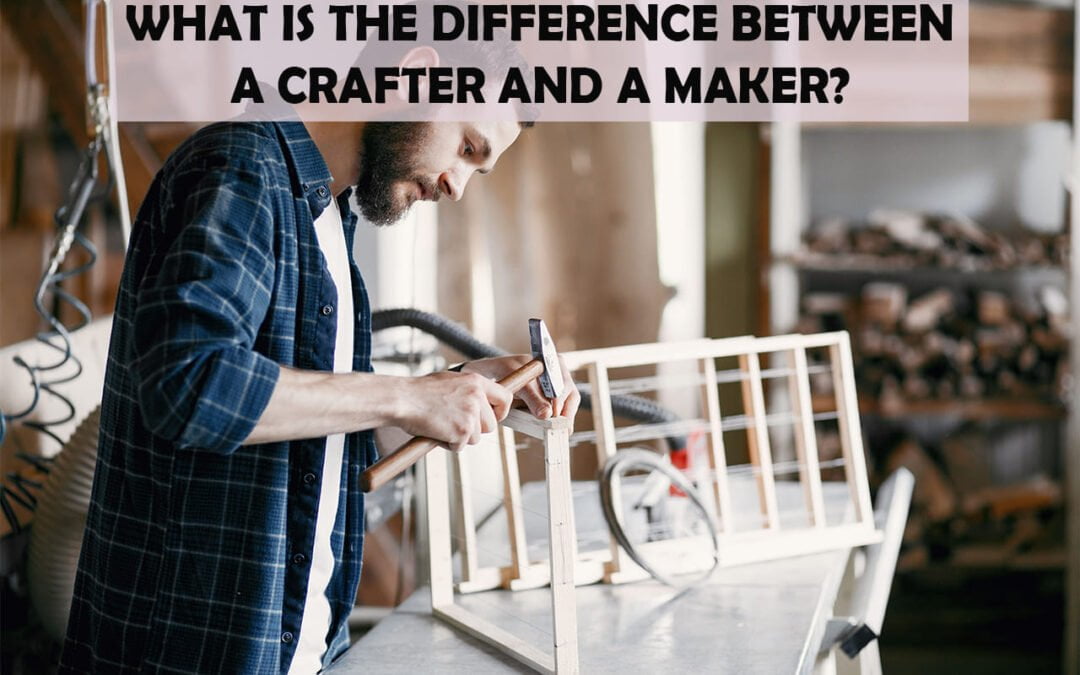It may seem like they are the same, but there are key differences between these two activities.
Crafters typically use pre-made kits or supplies to make items while makers build from scratch.
They also require different sets of tools and equipment, have different skill sets, and follow different processes.
Understanding the nuances between crafting and making can help you decide which is better suited for your needs.
Whether you want to create something with your own hands or just enjoy a fun project that requires minimal effort, this article will explore the benefits of becoming either a crafter or a maker in woodworking.
Key Takeaways
- Crafters in woodworking use pre-made kits or supplies, while makers build something entirely from scratch.
- Makers in woodworking combine craftsmanship heritage with digital tools, exploring art, technology, and design.
- Crafters take pride in producing one-of-a-kind items, while makers often use existing components or repurposed materials.
- Power tools are essential for makers, while hand tools refine project details, and sharpening skillset is important for professional-looking projects.
Definition of a Crafter
A crafter is someone who works with their hands to create unique, personalized pieces out of wood, using a combination of skill, patience, and creativity!
As seen on social media and in hobbyist trends, crafters take pride in producing one-of-a-kind items that reflect their distinct styles. They are detail-oriented and understand the importance of quality workmanship for each piece they make.
Crafters view each project as an opportunity to express themselves through woodworking while creating functional art. With this in mind, they strive to bring out the best in every item crafted. Their passion for creating beautiful pieces makes them beloved by many.
Thus, transitioning into what defines a ‘maker’…
Definition of a Maker
You might think of a maker as someone who creates something entirely from scratch, using their skills and knowledge to manipulate materials into a finished product.
A maker is part of the modern DIY culture, combining craftsmanship heritage with digital tools and machines to create unique works of art. They use their creativity and imagination to explore the boundaries between art, technology, and design.
Makers often make use of existing components like electronics or repurposed materials to create something that is both functional and aesthetically pleasing. With this approach, they can bring unique ideas into existence easily and quickly. By utilizing creative problem-solving techniques, makers can turn any challenge into an opportunity for innovation.
Their innovative spirit makes them invaluable in today’s ever-evolving technological world.
Transitioning now into the next section about ‘tools and equipment’…
Tools and Equipment
Unlock your inner craftsman and explore the vast possibilities with tools and equipment.
From CNC machines to traditional joinery techniques, you can create many different woodworking projects.
Power tools are essential for a maker as they enable you to work faster and more efficiently.
Essential hand tools such as chisels, saws, and planes help refine the details of a project.
With these materials at your disposal, you can hone your skillset to achieve amazing results.
Skillset
Sharpening your skillset is key for making professional-looking projects, and it can make all the difference!
Crafters and makers in woodworking have different skillsets: collaboration, time saving, resource sharing, and precision.
Working with others to create something beautiful requires a combination of supportive communication and technical know-how.
Time-saving techniques help ensure projects are completed faster without sacrificing quality.
Resource sharing allows for the efficient use of tools or materials to get the job done right.
Finally, precision is essential to make sure every detail meets expectations.
Understanding these differences between crafters and makers will give you an edge when it comes to your next project – so let’s move onto the process!
Process
Knowing the nuances of the process is essential for achieving great results. For crafters and makers in woodworking, selecting the right timber is key to ensuring desired results. Design techniques are also important when crafting furniture or making art pieces. Knowing which tool and technique to use at each step of the way is what sets a crafter apart from a maker.
With careful consideration given to both material selection and design, crafters and makers can achieve their desired outcomes in woodworking projects. This transition leads to exploring the benefits of woodworking.
Benefits of Woodworking
Gaining a deep appreciation for the craft, you’ll quickly discover the many benefits of woodworking.
From learning about tools and techniques to mastering the art of time management, there’s a steep learning curve but once achieved, it can be immensely rewarding.
Woodworking also offers opportunities to personalize projects and create something unique that will stand out from mass-produced items.
It’s an enjoyable way to learn patience and concentration while developing your style and creating pieces that are both beautiful and functional.
Conclusion
You’ve learned that the difference between a crafter and a maker in woodworking is quite clear. A crafter typically uses basic tools and equipment to create items, while a maker has more advanced tools, like CNC machines, at their disposal.
Crafters usually focus on smaller projects with less complex designs, while makers often tackle larger projects with intricate details. Both require skill and attention to detail to produce quality results. Whether you choose to craft or make your projects, the satisfaction of creating something unique is priceless!

